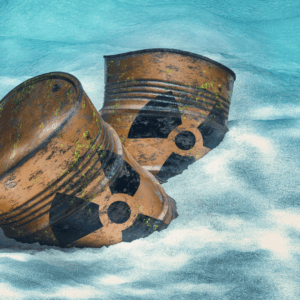Camp Lejeune Water Contamination Lawyers








Tittle & Perlmuter is currently filing Camp Lejeune Water Contamination Lawsuits on behalf of those exposed to toxic water at the Marine base. The Camp Lejeune Justice Act has been signed into law and veterans, their families, and civilians who lived and worked on the base can now seek compensation for toxic exposure. If you or a loved one lived at the base for 30 days or more between August 1st, 1953 & December 31st, 1987 and have suffered injuries, losses, or damages, our experienced attorneys can file a lawsuit against the government on your behalf. Call or contact our team today for a FREE consultation to evaluate your case, explain your legal options, and discuss the legal process.
See If You Qualify for a Camp Lejeune Water Contamination Lawsuit
Background on Camp Lejeune
Camp Lejeune is a United States Marine Corps base located in Jacksonville, North Carolina. The base was established in 1941 as a United States military facility for marine and amphibious assault training. It spans around 250 square miles and has 14 miles of beaches. From 1953 to 1987, the Camp Lejeune water supply was contaminated with toxic substances, resulting in one of the worst water contamination cases in U.S. history. In addition to 70 secondary chemicals, the four main chemicals were:
- Trichloroethylene (TCE)
- Tetrachloroethylene (PCE)
- Vinyl chloride (VC)
- Benzene
Camp Lejeune Justice Act of 2022
On Wednesday, August 10th, 2022 President Joe Biden signed the Honoring Our PACT Act into law. The Camp Lejeune Justice Act was also included in the bill.
The historic Honoring Our Promise to Address Comprehensive Toxics (PACT) Act allows veterans impacted by toxic exposure stemming from their military service to have access to benefits and healthcare. This bill is a monumental step in helping all veterans exposed to toxic chemicals during service and helping achieve justice for veterans, their families, non-military staff, and others who were harmed by the toxic water at Camp Lejeune. Tittle & Perlmuter is currently filing lawsuit against the federal government for those who were exposed to contaminated water at the Marine base. Our team is dedicated to supporting veterans who have sacrificed so much for our constitutional rights and will pursue the legal justice and compensation you deserve.
What are the Effects of Contaminated Water at Camp Lejeune?
The contamination resulted in exposures up to 280 times over the recommended safety limits. In 1982, the Marine Corps discovered volatile organic compounds (VOCs) in the drinking water that was provided by two of the eight water treatment plants on base. VOCs are known carcinogens that are associated with increased risk of cancer, adverse birth outcomes, and other severe health effects. The Agency for Toxic Substances and Disease estimated that PCE concentrations exceeded the EPA maximum contaminant level. During this period, over one million Marines, Marine families, and civilian workers were exposed to toxic drinking and bathing water at Camp Lejeune. The most contaminated wells were shut down, but serious health effects occurred for an extended period, causing everything from cancer to Parkinson’s disease.
Several scientific studies were conducted to determine if the water caused cancer in those exposed. The major studies concluded that the contaminated water significantly increased the risk of cancer and other chronic diseases. There have been thousands of reported cases, but the total effects and range to which the contamination spread is still an ongoing investigation.
Can Toxic Water Cause Parkinson’s Disease?
The Environmental Protection Agency (EPA) performed studies that found that Parkinson’s Disease is a neurobehavioral effect that may be caused by drinking toxic water at the marine base. Many who have been diagnosed with this condition recently can relate the cause to be the drinking water at Camp Lejeune because Parkinson’s Disease is a slow onset disease that occurs over several years.

Exposure-Related Diagnosis
A potential water contamination-related diagnosis could consist of the following:
- Aplastic anemia
- Appendix cancer
- Autoimmune disease
- Bile duct cancer
- Birth defect
- Bladder cancer
- Brain cancer
- Breast cancer
- Cardiac defect
- Cervical cancer
- Cognitive disability
- Colorectal cancer
- Congenital malformation (microcephaly)
- Conjoined twins
- End stage renal disease
- Esophageal cancer
- Female infertility
- Fetal death
- Gallbladder cancer
- Hepatic steatosis (fatty liver disease)
- Hodgkin’s disease
- Kidney cancer
- Kidney disease
- Leukemia
- Liver cancer
- Lung cancer
- Major fetal malformations
- Miscarriage
- Multiple myeloma
- Myelodysplastic syndromes
- Neurobehavioral effects (fatigue, lack of coordination, headaches, trouble concentrating, depression, and fine & general motor function)
- Non-Hodgkin’s lymphoma
- Oral cancer
- Ovarian cancer
- Pancreatic cancer
- Parkinson’s disease
- Prostate cancer
- Renal toxicity
- Scleroderma
- Sinus cancer
- Soft tissue cancer
- Soft tissue sarcoma
- Spinal cancer
- Thyroid cancer
- Tongue cancer
- Tonsil cancer
What Led to the Water Contamination at Camp Lejeune?
Out of eight water treatment plants, generations of residents and workers at Camp Lejeune depended on the tap water distributed by two: Tarawa Terrace and Hadnot Point. Years later, it was discovered that these two plants were responsible for the spread of toxic water. Hadnot Point, the oldest of the two plants, became contaminated when discarded oil and other chemicals seeped into the ground, making their way into the water supply. The plant also had a leak in a mismanaged underground storage tank that added more chemicals to the water. The Tarawa Terrace plant was contaminated by improperly discarded solvents from a neighboring dry cleaner off-base. For more than 30 years, service members, their families, and civilians living and working at the military base unknowingly drank and bathed in the toxic water. The water supply at Camp Lejeune wasn’t tested for toxins until the 1980s.
Do I Qualify for a Camp Lejeune Lawsuit?
The victims of this exposure are veterans who have given themselves to serve their country, their families who trusted that they were safe within the military installation, and other innocent personnel who worked in and around the base.
What is the Camp Lejeune Water Contamination Case Criteria?
- What is your relationship to the individual that was at Camp Lejeune?
- Do you have legal authorization to pursue claims on behalf of the individual that was at Camp Lejeune?
- Were you at Camp Lejeune between the years of 1953 and 1987?
- Were you at Camp Lejeune for at least 30 days?
- What is the reason the exposed individual was at Camp Lejeune?
- Has any diagnosis been made? What was the year of diagnosis?
Camp Lejeune Water Contamination Timeline
The base’s water contamination came from two of its water treatment plants between 1953 and 1987. The following timeline helps explain when and where the contamination occurred at Camp Lejeune:
1941 – Construction of Camp Lejeune began in Onslow County, North Carolina, including the early housing development, Hadnot Point, and the Hadnot Point water system. Hadnot Point is the first of the two water treatment plants responsible for causing the toxic water disaster.
1952 – Construction of the Tarawa Terrace housing development and water treatment system began. Tarawa Terrace is the second of the two treatment systems that became contaminated.
1953 – According to the Agency for Toxic Substances and Disease Registry (ATSDR), underground leaking storage tanks and improperly disposed oil and waste began to affect Hadnot Point’s drinking water system.
1957 – ATSDR states the neighboring dry cleaners “ABC One-Hour Cleaners” began to contaminate the Tarawa Terrace water treatment system with improperly disposed toxins.
1972 – The Holcomb Boulevard water system began operations and was supplied intermittently by Hadnot Point.
1979-1980 – The Environmental Protection Agency (EPA) released its standards for THMs, a by-product of drinking water disinfection and recommended drinking water levels for TCE, a solvent used in the dry-cleaning industry.
1982-1984 – The navy began an environmental cleanup program at Camp Lejeune, testing wells near the known contaminated sites.
1985-1987 – The U.S. Marine Corps removed contaminated wells from service. The process took more than two years to complete, ending in December of 1987.
1989 – The EPA named Camp Lejeune and ABC One-Hour Cleaners as Superfund sites.
1991 – ATSDR began a multi-year investigation into the risks of children whose mothers were exposed to contaminated water during their pregnancy at Camp Lejeune.
1998 – The ATSDR study concluded that more investigations into exposure were necessary.
1999-2002 – ATSDR conducted telephone surveys to identify birth defects and childhood cancers in children affected by Camp Lejeune’s water.
2003 – ATSDR found 106 children with specific birth defects and cancers.
2004 – The Commandant of the Marine Corps formed a panel to evaluate the decision-making regarding toxic water at Camp Lejeune and determined that the Marine Corps acted responsibly.
2007 – The USMC launched a notification and registration campaign for former residents to sign up for information about water contamination.
2008 – President George W. Bush signed the 2008 National Defense Authorization Act that required the Department of the Navy to conduct a health survey of people exposed to toxic water at Camp Lejeune.
2009 – Laura Jones, a wife of a former marine who lived at Camp Lejeune from 1980 to 1983, was the first person to file a lawsuit against the United States government. Her lawsuit alleged that her exposure to contaminated water caused her to be diagnosed with non-Hodgkin’s lymphoma.
2012 – President Barack Obama signed the Honoring America’s Veterans and Caring for Camp Lejeune Families Act. This made receiving health care through the U.S. Department of Veteran Affairs (VA) easier for military service members impacted by the water contamination.
2017 – An additional $2 billion in disability assistance was made available to veterans, reservists, and National Guard members who were impacted by the water contamination.
2021 – The Camp Lejeune Justice Act was introduced in the U.S. House of Representatives. This would allow individuals to sue and recover damages from exposure to contaminated water at Camp Lejeune from August 1, 1953 to December 31, 1987.
2022 – The Camp Lejeune Justice Act was approved on August 2, 2022 as part of the Honoring Our PACT Act 2022. This legislation allows veterans, their families, and civilians who lived or worked at Camp Lejeune from 1953 to 1987 for 30 days or more to file Camp Lejeune Water Contamination lawsuits for financial compensation, medical bills, pain and suffering, lost wages, and other damages or harm.
Can I File a Lawsuit for my Camp Lejeune Exposure?
The United States government recently passed the Camp Lejeune Justice Act of 2022. This act allows those who were exposed to the toxic drinking water from 1953 to 1987 to seek monetary compensation for any injuries and damages caused by their exposure. If your family member died from cancer or another health condition that you believe to be connected to Camp Lejeune’s contaminated water, you may be able to file a wrongful death suit.
How Much is My Camp Lejeune Exposure Lawsuit Worth?
The value of a potential personal injury or wrongful death lawsuit is determined on a case-by-case basis. Those affected may be eligible to recover compensation for:
- Medical bills
- Future medical expenses
- Pain and suffering
- Grief and emotional trauma
- Lost income and future earnings
By pursing a lawsuit for your Camp Lejeune toxic exposure, you may be entitled to more compensation than what is available through a workers’ compensation or VA disability claim.
Tittle & Perlmuter Can Help
The contaminated water at this marine base has put service members, their families, and civilians at risk for cancer and other serious illnesses. Even though the pollution started at Camp Lejeune, most of those stationed at the marine corps base left over the 30-year contamination. These victims are now fighting for their lives across the country. There have already been thousands of stories shared by those affected, but there are still thousands more unaccounted for throughout the United States.
Our Camp Lejeune water contamination attorneys can help if you or someone you care about have been harmed by contaminated water at the base. Service men and women, family members, workers, and nearby residents may be eligible to file a claim for monetary compensation from the United States government. Take the first step by calling or contacting our team today for a FREE consultation, so our dedicated attorneys can help explain your rights.

